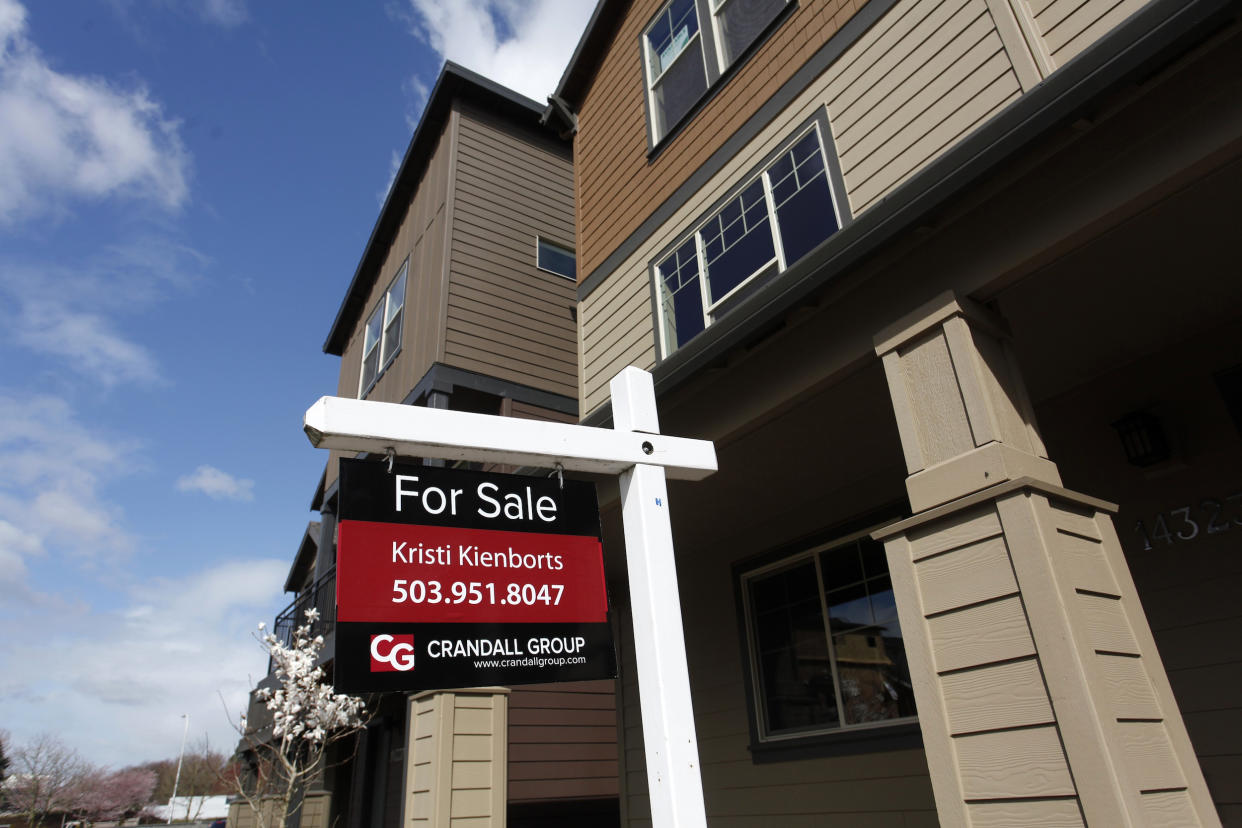Home prices hit another record high in September despite higher mortgage rates
So far, it doesn't matter how high mortgage rates go; home prices continue to set record highs.
The S&P CoreLogic Case-Shiller National Home Price Index increased 0.7% in September from August on a seasonally adjusted basis, marking the eighth straight month of growth and an all-time high for the index. Home values were also up 3.9% over the last 12 months, according to the latest data released Tuesday, besting the 2.5% annual gain logged in August.
The index tracking home sales prices in the 20 largest US cities gained 0.7% in September from August, just missing the 0.8% increase that economists polled by Bloomberg were expecting. The index rose 3.9% compared to last September, in line with the Bloomberg forecast.
The resilience of home prices underscores how much low inventory is driving the housing market, even as rising mortgage prices worsen affordability and scare off some buyers.
Read more: Mortgage rates at 20-year high: Is 2023 a good time to buy a house?
"We’ve commented before on the breadth of the housing market’s strength, which continued to be impressive," said Craig J. Lazzara, managing director at S&P DJI, in a press statement. "Although this year’s increase in mortgage rates has surely suppressed the quantity of homes sold, the relative shortage of inventory for sale has been a solid support for prices."
"Unless higher rates or exogenous events lead to general economic weakness, the breadth and strength of this month’s report are consistent with an optimistic view of future results," he added.
Detroit, San Diego, and New York led the way for the fastest-growing cities in the US. Detroit reported the highest year-over-year growth, with an annual increase of 6.7%. San Diego and New York followed with growth of 6.5% and 6.3%, respectively.
Previous private sector data showed that the national median home prices for all resale housing types rose 2.8% to $394,300 in September from $383,500 a year ago, even as housing transactions activity slumped 15.4% in the same period, the National Association of Realtors reported.
Read more: How to buy a house in 2023
"For the third straight month, home prices are up from a year ago, confirming the pressing need for more housing supply," Lawrence Yun, NAR chief economist, said about September's annual increase. "As has been the case throughout this year, limited inventory and low housing affordability continue to hamper home sales…"
Higher sales of new homes also is helping to boost prices. New home prices are generally higher than those of previously owned homes. In September, sales of new construction jumped 12.3% from August, with the median sales price coming in at $418,000.

The continued rise in prices is exacerbating the affordability crisis, which is also getting hammered by higher mortgage rates.
"Buyers really struggle in a housing market where we have higher interest rates and higher home prices that continue to go up too," Jessica Lautz, NAR's deputy chief economist, told Yahoo Finance.
Today's homebuyers face borrowing costs that have nearly tripled since the summer of 2021, when the average rate on the 30-year fixed mortgage was as low as 2.77%, according to Freddie Mac data. Now, the rate is well above 7%.
Read more: 5 strategies to get the lowest mortgage rates in 2023
NAR's affordability index — a measure of whether a typical family earns enough to afford a typical home — was 94.1 in September. Anything below 100 indicates an unaffordable market; the lower the number, the more unaffordable.
Higher mortgage rates are also keeping a lid on inventory levels. Many homeowners have refrained from selling their houses to keep their low interest rate.
According to the NAR, inventory at the end of September was 1.13 million, up 2.7% from August but down 8.1% from one year ago at 1.23 million. The limited availability equates to 3.4 months of supply, while a balanced and healthy market has six months.
But even a slide in mortgage rates — which has occurred recently in November — may not bring the expected relief for buyers.
"I think if interest rates drop, we're going to have so much demand on the sidelines that comes into the market," Lautz said. "It could bid up home prices unless we have more housing inventory."
Rebecca Chen is a reporter for Yahoo Finance and previously worked as an investment tax certified public accountant (CPA).
